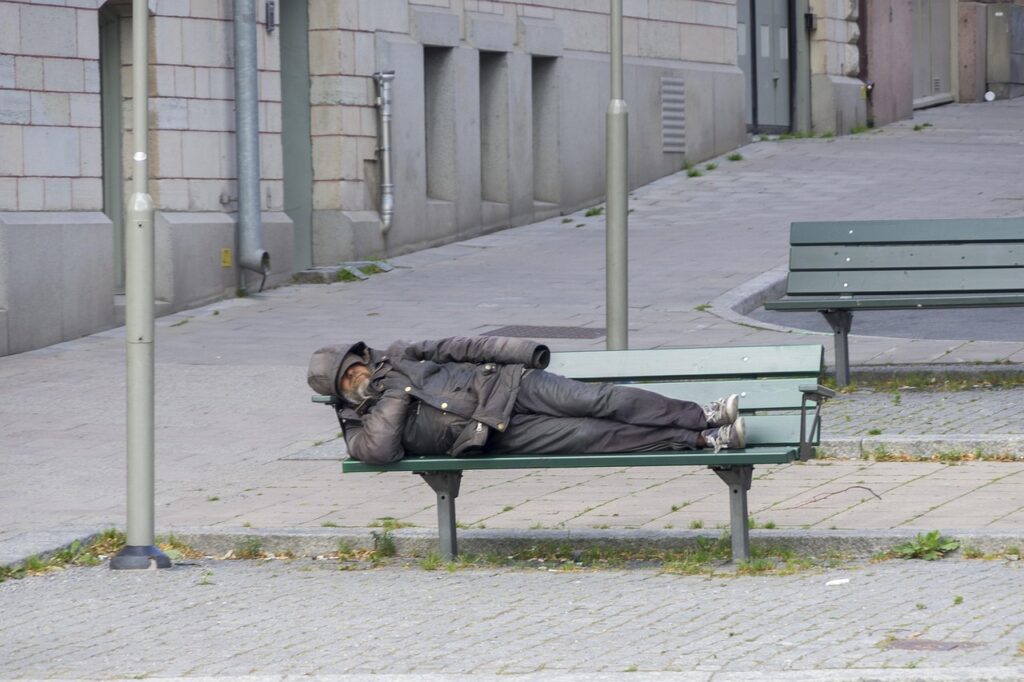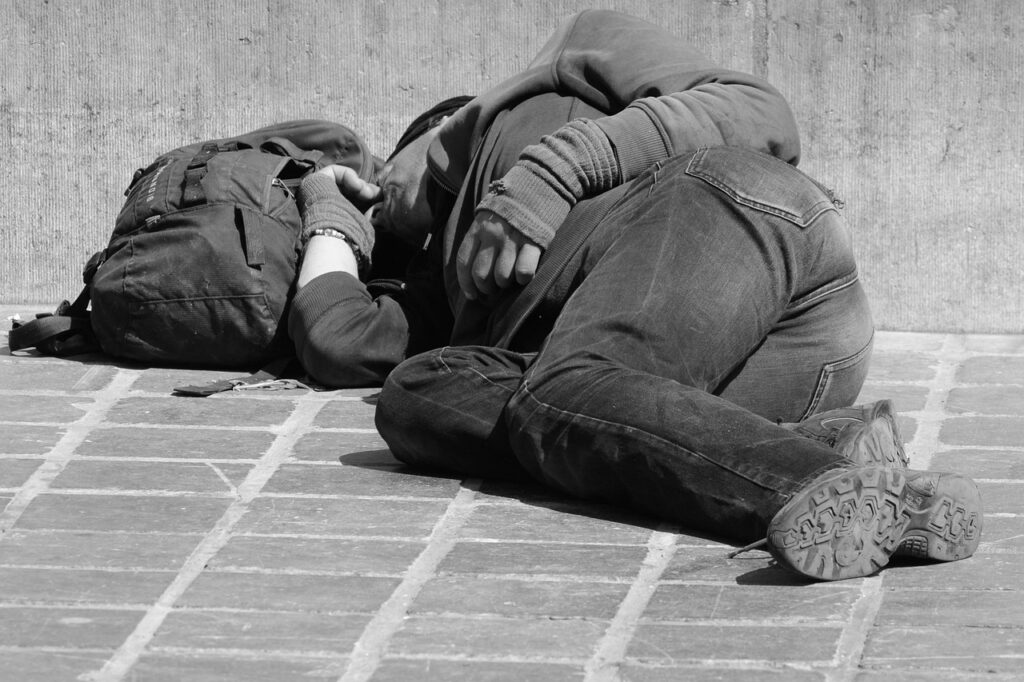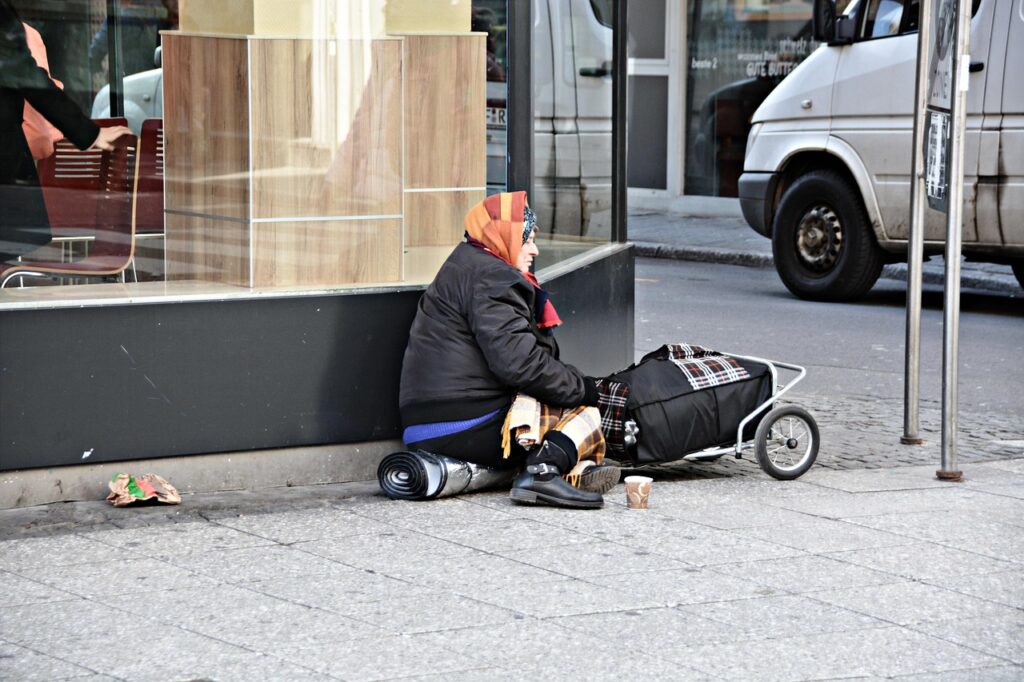
Homelessness in the United States is deeply connected to mental health, and the scope of the challenge has grown. On a single night in January 2023, 653,104 people were experiencing homelessness nationwide—the highest total since national reporting began—according to HUD’s Annual Homeless Assessment Report (AHAR). While homelessness is driven foremost by housing affordability pressures, mental health conditions and substance use disorders are disproportionately prevalent within the homeless population and often complicate exits from homelessness (HUD AHAR 2023).
Reliable, recent estimates indicate that about one in five people experiencing homelessness struggles with a serious mental illness (SMI), and more than one in six suffers from a chronic substance use disorder. HUD-linked counts further suggest that this translates to more than 130,000 people with a serious mental illness experiencing homelessness on a single night in 2023. These figures reinforce earlier research showing that mental health conditions do not cause homelessness on their own, but they are significant, bidirectional risk factors—mental illness can precipitate housing loss, and homelessness itself worsens mental health through trauma, sleep deprivation, exposure, and disrupted treatment.
Detailed studies show major gaps in access to care. The California Statewide Study of People Experiencing Homelessness (CASPEH)—the nation’s largest representative study of homelessness in decades—found that despite high rates of anxiety, depression, and trauma exposure, only 18% of respondents had received non-emergent mental health care recently, 9% had received counseling, and 14% were taking mental health medications at the time of survey. The study also documented an aging homeless population (47% aged 50+), a median spell of homelessness of 22 months, and extremely high rates of time spent unsheltered—conditions that compound psychiatric symptoms and make sustained treatment far more difficult.

The best evidence we have shows that permanent supportive housing and Housing First programs work well for people who are chronically homeless and are also dealing with both mental illness and substance use. A major New York City study found that placing thousands of adults with serious mental illness in supportive housing led to big drops in shelter stays, hospital visits, and time spent in jail or prison, which also saved public money overall. The 1811 Eastlake Housing First program in Seattle demonstrated significant reductions in total public costs within 6–12 months alongside strong housing retention among individuals with severe alcohol use disorder. More recently, a randomized controlled evaluation of Denver’s Supportive Housing Social Impact Bond initiative by the Urban Institute reported 77% housing retention after three years, ~34% fewer police contacts, and ~40% fewer arrests for participants compared with a control group, with corresponding reductions in detox and jail use—clear indicators that pairing housing with intensive services improves stability and reduces criminal-legal system cycling among high-need groups.
At the population level, these programs are not a cure-all or an easy fix: they require sufficient affordable units, sustained funding for on-site clinical services, and coordination with outpatient psychiatry, primary care, and benefits. But across settings and methods (observational cohorts, RCTs, and pay‑for‑success evaluations), the findings are consistent: stable housing plus supportive services improves mental health access and reduces costly crisis-system use for people with the highest needs. Expanding such models, while simultaneously scaling upstream prevention (eviction prevention, rental assistance, and community mental health capacity), remains the most evidence‑aligned strategy to address the intertwined challenges of homelessness and mental health.

Multiple nonpartisan analyses conclude that housing affordability and supply are major population‑level drivers of homelessness—e.g., the U.S. Government Accountability Office found that a $100 increase in median rent is associated with a 9% rise in homelessness in the areas examined. At the same time, outcomes from specific program models are more nuanced. A National Academies consensus review found strong evidence that permanent supportive housing (PSH) improves housing stability, while evidence is mixed or insufficient regarding improvements in mental/physical health and substance use; it also emphasized the need for robust clinical and recovery supports alongside housing. A large review by the Community Guide also found that Housing First and permanent supportive housing helped people stay housed more reliably than treatment‑first programs. But the results for health care use and overall health were mixed, showing that housing is important but often not enough on its own for full recovery.
Conservative policy analysts have raised additional cautions. Reviews from the Manhattan Institute argue that Housing First is not a cure‑all, that claims about ending homelessness or achieving large public‑cost savings are sometimes overstated, and that systems should allow greater flexibility (e.g., pairing PSH with treatment requirements for a small subset, investing more in temporary/shelter options, and coordinating with treatment courts). While these are opinion papers, they raise data-based concerns that fit with the National Academies’ call for better integration of medical and mental health care.
For individuals whose homelessness is tightly linked to untreated serious mental illness, there is peer‑reviewed evidence that Assisted Outpatient Treatment (AOT) can improve safety and stability when used with services. New York’s Kendra’s Law evaluations reported large reductions in hospitalization days and other adverse events during AOT; complementary studies in Psychiatric Services found significantly lower odds of arrest during and shortly after AOT compared with the pre‑AOT period. These findings support the idea that, for a small, high‑need subset, combining housing with mandated, well‑resourced community treatment can reduce crises, arrests, and cycling between hospitals, shelters, and jails.
Finally, the link between homelessness and mental health cannot be separated from the overdose crisis. Local public‑health reports (e.g., Los Angeles County) have identified drug overdose as the leading cause of death among people experiencing homelessness since 2017. National data show very high overdose levels through 2023, with a sharp provisional decline in 2024 that, while encouraging, still leaves mortality far above pre‑crisis baselines. These challenges make it harder for people to get stable, and they show why housing programs must also include proven substance-use treatments (such as medicines for opioid use disorder), harm-reduction services, and steady follow-up care.
Bottom line: The most balanced reading of the evidence is that housing affordability explains where homelessness is most prevalent, while behavioral‑health conditions often drive who is at highest risk of chronic homelessness and repeated crises. Durable progress requires both sides of the ledger: increasing housing supply and affordability and scaling clinical treatment capacity (including AOT where appropriate), with rigorous follow‑through and performance monitoring.
Bibliography
- Department of Housing and Urban Development. 2023 Annual Homeless Assessment Report (AHAR), Part 1. HUD, 2023. https://www.huduser.gov/portal/sites/default/files/pdf/2023-AHAR-Part-1.pdf
- GAO. Homelessness: Better HUD Oversight of Data Collection Could Improve Estimates of Homelessness. GAO‑20‑433, 2020. https://www.gao.gov/products/gao-20-433
- National Academies of Sciences, Engineering, and Medicine. Permanent Supportive Housing: Evaluating the Evidence for Improving Health Outcomes Among People Experiencing Chronic Homelessness. NASEM, 2018. https://nap.nationalacademies.org/catalog/25133/permanent-supportive-housing-evaluating-the-evidence-for-improving-health-outcomes
- National Academies of Sciences, Engineering, and Medicine. Permanent Supportive Housing: Report Highlights. 2018. https://nap.nationalacademies.org/resource/25133/Permanent%20Supportive%20Housing-ReportHighlights.pdf
- Urban Institute. Breaking the Homelessness–Jail Cycle with Housing First: Results from the Denver Supportive Housing Social Impact Bond Initiative. 2021. https://www.urban.org/sites/default/files/publication/104497/breaking-the-homelessness-jail-cycle-through-a-housing-first-approach_0.pdf
- Urban Institute. Costs and Offsets of Providing Supportive Housing to Break the Homelessness–Jail Cycle. 2021. https://www.urban.org/sites/default/files/publication/104499/costs-and-offsets-of-providing-supportive-housing-to-break-the-homelessness-jail-cycle_0.pdf
- Culhane, Dennis P., Stephen Metraux, and Trevor Hadley. “Public Service Reductions Associated with Placement of Homeless Persons with Severe Mental Illness in Supportive Housing.” Housing Policy Debate 13, no. 1 (2002): 107–163. https://shnny.org/uploads/The_Culhane_Report.pdf
- Larimer, Mary E., et al. “Health Care and Public Service Use and Costs Before and After Provision of Housing for Chronically Homeless Persons With Severe Alcohol Problems.” JAMA 301, no. 13 (2009): 1349–1357. https://jamanetwork.com/journals/jama/fullarticle/183666
- Lachaud, Jean, et al. “The Effect of a Housing First Intervention on Acute Health Care Use among Homeless Adults with Mental Illness.” Canadian Journal of Psychiatry 66, no. 11 (2021): 1035–1046. https://pmc.ncbi.nlm.nih.gov/articles/PMC8382791/
- New York State Office of Mental Health. Kendra’s Law: Final Report on the Status of Assisted Outpatient Treatment. 2005. https://my.omh.ny.gov/analyticsRes1/files/aot/AOTFinal2005.pdf
- Swanson, Jeffrey W., et al. “Arrest Outcomes Associated With Outpatient Commitment in New York State.” Psychiatric Services 62, no. 5 (2011): 504–508. https://pmc.ncbi.nlm.nih.gov/articles/PMC5826718/
- Gilbert, Andrew R., et al. “Reductions in Arrest Under Assisted Outpatient Treatment in New York.” Psychiatric Services 61, no. 10 (2010): 996–999. https://pubmed.ncbi.nlm.nih.gov/20889637/
- Los Angeles County Department of Public Health, Center for Health Impact Evaluation. Mortality Rates and Causes of Death Among People Experiencing Homelessness in Los Angeles County. 2025. https://publichealth.lacounty.gov/chie/reports/Homeless_Mortality_Report_2025.pdf
- Peng, Young, et al. “Housing First and Other Permanent Supportive Housing Programs: A Community Guide Systematic Review.” American Journal of Preventive Medicine 59, no. 3 (2020): e15–e26. https://pmc.ncbi.nlm.nih.gov/articles/PMC8513528/
- Eide, Stephen. Housing First and Homelessness: The Rhetoric and the Reality. Manhattan Institute, 2020. https://media4.manhattan-institute.org/sites/default/files/housing-first-and-homelessness-SE.pdf
- Eide, Stephen. The Future of Housing for the Homeless. Manhattan Institute, 2025. https://media4.manhattan-institute.org/wp-content/uploads/the-future-of-housing-for-the-homeless.pdf




